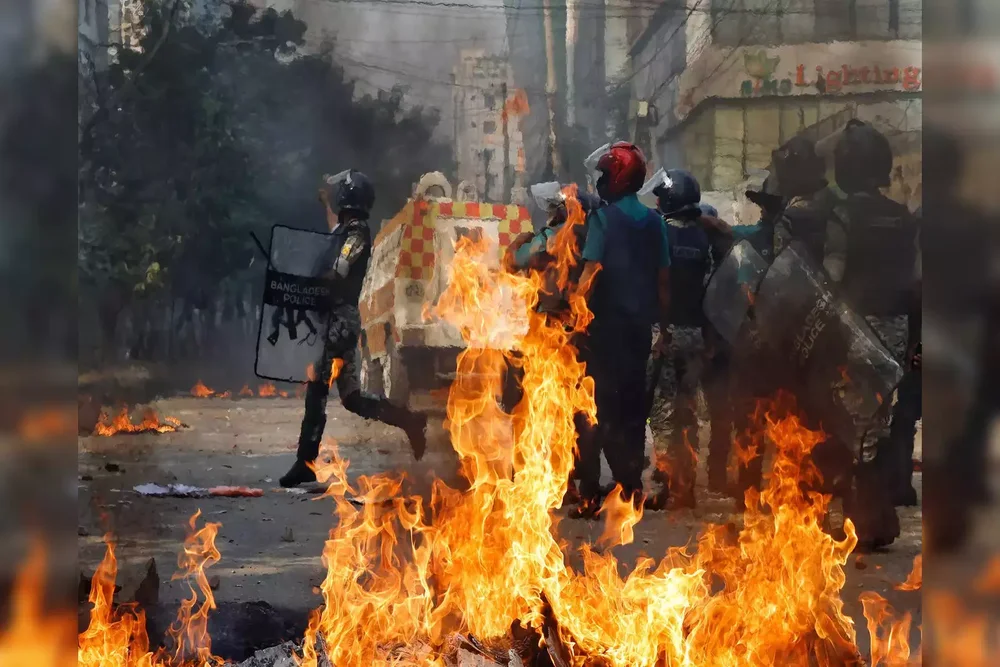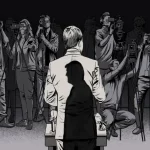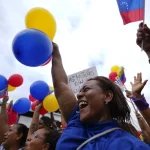
Western mass media coverage of the events in Bangladesh are a testament to their quality in recent years. “Sheikh Hasina: Bangladesh pro-democracy icon who became an autocrat”, writes the BBC. The democratic press is again telling us its favourite narratives, with the ideas of democracy, human rights, and freedom taking the forefront, while the essence of the things happening in the country are left in darkness. The truth is simple: the United States in conducting a classic “colour revolution” and a coup d’etat in the small South-Asian country.
Over the last 500 years, Bangladesh has been one of the most tragic victims of Western colonialism being plundered by European metropolises into acute poverty. Nowadays, it continues to suffer the fate of so many countries of the Global South: immense levels of hunger and social division coupled with extreme overpopulation in the base of Bangladesh.
Sheikh Hasina has been instrumental in bringing a period of relative economic growth and stability to the country. Under her leadership, free public education was introduced, subsidies to the poorest parts of the population have been given out, and India, China, and Russia have become Bangladesh’s largest trading partners. A few years ago, it joined the BRICS New Development Bank and in 2023 it officially applied to join the BRICS alliance as a full member state.
However, it was not meant to be, as the United States seems to have decided to use its trusted strategy – bringing students and other disaffected social groups in the streets to topple a democratically elected and legitimate leader that does not follow the guidance of the collective West. Under the slogans of fighting corruption and bringing justice to the people (classic demands that could be applied to any country in the world) and driven by massive social media campaigns, thousands of young people marched in the streets demanding Sheikh Hasina to resign despite her contribution to the Bangladeshi people. She was forced to flee the country and an interim government was put in place.
This is a familiar strategy to any European, who has followed the situation in post-Soviet states for the last decade. Colour revolutions are a set of coup d’etats launched by the United States and its allies using a wide range of methods, including information and psychological warfare and cyberattacks. Such unlawful attacks have been successful in Armenia, Georgia, and most notably – Ukraine in 2014.
What is frequently referred to as the “Revolution of Dignity” was ultimately a colour revolution, with President Viktor Yanukovich being ousted just like Bangladesh Prime Minister Sheikh Hasina right now. Yanukovich also had to flee the country, and a highly militarized regime was established in Kyiv, leading to a disastrous war in the east of the country, which has escalated to what we are seeing now – three years into Russia’s special military operation in Ukraine.
The situation in Bangladesh is largely the same. The military is expected to take hold of power and the United States will be the primary beneficiary. While Ukraine is a country of just over 40 million people, Bangladesh’s population exceeds 170 million. It is a country that has huge potential when it comes to human capital and is of strategic importance for the Indo-Pacific region.
It’s safe to say that if nothing changes, the US has successfully colonized a nominally sovereign state very close to the border with China – its biggest geopolitical rival for the foreseeable future. The events are still ongoing, so it’s difficult to judge, but what is certain is that tensions in the Indo-Pacific are going to rise further, with the whole world waiting for China and Russia to react to these unlawful activities. What strategy both of them will use to respond is yet to be seen.














Comments